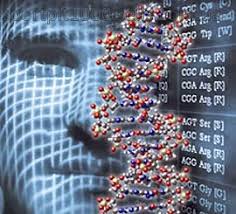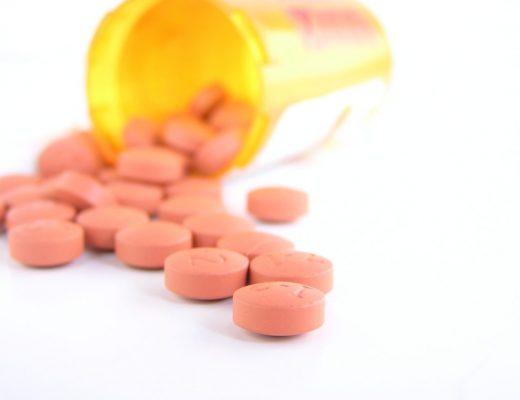The information in this article is provided for educational purposes only.
You should consult your doctor and take no action in this regard.
Any posology and methods of use indicated in relation to use in sports or in a beauty salon are not relevant to specific advice; they intend to provide general information in accordance with what is disseminated by scientific publications on this subject (see bibliography or other texts on doping) in order to limit the phenomena of abuse, while it should be understood that there is no safe and free dosage or drug combination of side effects … For these reasons, the author disclaims all responsibility for damages, claims or damages, direct or indirect, arising from the use of this information.

IGF-1 – somatomedin
Insulin-1-like growth factor, commonly referred to as IGF-1, is a polypeptide hormone that belongs to the growth factor hormone family. It is a hormone that is naturally produced in all people with production mainly in the liver and partly in peripheral tissues. However, there are synthetic versions, and they are produced using recombinant DNA technology.
IGF-1 is a highly anabolic hormone that affects many areas of the human body. It also has an important relationship with human growth hormone (HGH) and is structurally similar to insulin. There are several synthetic IGF-1 products on the market, but perhaps the most famous is Increlex, manufactured by Tercia INC.
Pituitary Growth Hormone In a therapeutic context, IGF-1 is primarily used to treat IGF-1 deficiency. However, it is also used in patients who do not respond to HGH. With this type of therapy, a person may very well have HGH in their system, but for one reason or another they do not respond to the hormone. IGF1 treatment for this purpose is approved by the FDA, but some healthcare professionals consider it highly controversial due to the possible metabolic effects that can occur. So we have seen an improvement in performance, and in recent years IGF1 has become an important hormone in this area. It has strong anabolic properties, has strong regenerative properties and has become a favorite of many bodybuilders.

IGF-1 Functions and Features:
IGF-1 is a protein hormone composed of a sequence of 70 amino acids. The synthetic or naturally derived sequence is the same; there is no difference. As a functioning hormone, IGF-1 actively works to support growth by improving amino acids, glucose and fatty acids. Since it is closely related to insulin, it can also affect blood sugar levels. The use of IGF-1 can potentially significantly lower blood glucose levels with subsequent hypoglycemic conditions. By increasing the fatty acid content, it also promotes the accumulation of body fat, which is certainly a potential disadvantage when used. However, the benefit can be beneficial if diet and lifestyle are well planned when integrated with exogenous IGF-1.
IGF-1 significantly increases the number of cells in skeletal muscle, which in turn can lead to improved muscle growth. It does this by activating the phosphatidylinositol 3-kinase (PI3K) -AKT pathway. Not only can it promote muscle growth, but in this way it can also promote bone growth and, to a certain extent, the growth of our internal organs.
IGF-1 also has a close relationship with growth hormone, another powerful hormone that is produced by all people. Growth hormone, like IGF-1, is anabolic, and IGF-1 is largely responsible for much of the anabolic action provided by HGH. This includes two main traits that are commonly associated with anabolism in nitrogen retention and protein synthesis. Greater nitrogen retention is important because approximately 16% of lean tissue is nitrogen. When nitrogen stores are depleted, it can lead to a catabolic state (muscle wasting).
When it comes to protein synthesis, it represents the rate at which cells build proteins, proteins that are the main building block of muscle tissue. It’s not hard to see how beneficial it is to improve protein synthesis. Not only will this allow you to build and maintain leaner tissue, but it will also play a vital role in the healing process, and this is where real progress lies. This relationship, closely related between IGF-1 and HGH, is also responsible for the increase in muscle cells and the stimulation of new muscle fiber growth. With IGF-1, you now have more muscle cells (muscle cell hyperplasia) and muscle fibers (mitogenesis) to work with.
Although the functions and properties of IGF-1 in anabolic quality are enormous, they are regulated by the amount of protein that reaches the muscle cells. Without enough protein, exogenous IGF-1 integration will cost very little.
IGF-1 also brings important traits that revolve around healing and recovery; they are actually quite strong. This is very obvious when you consider the hormone’s role in the production of connective tissue. IGF-1 will also improve the function of collagen, collagen found throughout the connective tissue of the body. Improving collagen function results in strengthening bones and muscle strength for proper movement. It can also positively affect the skin and blood vessels. Hence, IGF-1 will also promote cartilage repair and increased bone density, making it an excellent hormone in cases of rejuvenation and recovery needed.
One final note on IGF-1 traits: This hormone is known as a neuroprotector and neuropromotor, which can potentially lead to improved mental function. This factor can potentially be very beneficial for older adults when they have problems with dementia. However, further research is needed to fully understand the implications, but they look promising.

IGF-1 Effects:
The effects of IGF-1 are generally more suited to the advancement of the off-season and the physical recovery of any athlete. Very few will use this hormone in a detection cycle, as it can have a negative impact on a person’s metabolic rate. This is the last thing you want when you’re on a diet, but we can make an exception. Some competitive bodybuilders can use IGF-1 during competition preparation and remain lean while maintaining even most of their lean body mass. It takes years of experience to do this, not just a deep knowledge of hormones, but also a deep understanding of how they affect you as a person.
For the person looking for a raw size, there are some compelling options when considering IGF-1. Many will use it during a steroid cycle. anabolic, which will only improve the rate at which lean tissue is built as well as the amount. Others, and this is usually for more advanced bodybuilders, will use it during the bridge period. Bridge refers to the period of time between anabolic steroid cycles or full cycles. In this case, the patient will continue to use the maintenance dose of testosterone and supplement with IGF-1. Many of them also use HGH and are just continuing their cycle that just ended on a newly launched bridge. Regardless of the specific time of use, during a cycle or as a bridge, growth hormone is usually used. IGF-1, while highly anabolic, is also able to stimulate excess fat storage. In the off-season, maintaining adequate body fat levels is difficult in itself and is only complicated by IGF-1 supplementation. However, when we turn on HGH, the metabolic boost it provides should be enough to keep things in check. Plus, the synergy between the two is remarkable.
What can you expect from IGF-1 during the offseason? It is difficult to establish a specific number for the amount of weight gained or for a specific increase in strength. Since every person is different and reacts slightly differently, this can be difficult to determine. However, we do have data, in particular a study done on IGF-1 using mice. In the study, the mice were given a 15% increase in mass and a 14% increase in strength to IGF-1. This may seem like a small number, but it is a really big increase.
The hormone will improve overall recovery from exercise and strenuous activity, but it doesn’t end there. IGF-1 actually has healing properties, not masking as a pain reliever, but a true therapeutic treatment. The use of IGF-1 can significantly shorten the overall healing time for joint injuries. It has also been shown to significantly aid in the healing of tendons and ligaments. Since most athletes hit all of these areas of the body, IGF-1 becomes extremely valuable.
IGF-1 Side Effects:
IGF-1 can have side effects, but compared to many hormones, there aren’t many. Make no mistake, some of the possible side effects of IGF-1 may be troubling, but as with most hormones, there is hope. The most common side effect of IGF-1 is hypoglycemia. Clinical data showed that more than 40% of all those who received IGF-1 therapy had hypoglycemia at one level or another. Of those who entered a hypoglycemic state, 7% had severe cases, and about 5% had a hypoglycemic attack. No doubt the attack does not seem too tempting, and if you have ever experienced hypoglycemia, you should avoid it yourself. Fortunately, avoiding hypoglycemic conditions while using IGF-1 is one of the easiest things to avoid in the world; in fact, if this happens, it is your fault. Before introducing IGF-1, you should consume simple sugars with adequate amounts of food each time, especially protein and a mixture of simple and complex carbohydrates. It should take about 15-20 minutes before IGF-1 is injected. After injection, if symptoms of hypoglycemia begin to appear, consume the simpler sugars immediately and continue using them until the symptoms disappear.
Common symptoms of hypoglycemia include:
- Dizziness
- Sleepiness
- Hunger (often extreme)
- Depression
- Sweating
- heartbeat
- Tremor
- Headache
- Slurred speech
- Inability to concentrate
- Anxiety
- Abnormal behavior
If symptoms of hypoglycemia begin to appear, they immediately consume fast-acting carbohydrates such as sugar bars, or any type of food full of sugar or drink or carbohydrate juice; Grape juice is a fantastic choice. If ignored, it can, and in many cases, lead to severe hypoglycemia, which can be fatal. Full-blown severe hypoglycemia can lead to severe disorientation, seizures, and loss of consciousness, but as discussed, there is no reason for this if IGF-1 is used correctly.
While hypoglycemia is extremely easy to avoid, the most common side effect of using IGF-1 is, there are others to consider. Some may experience joint pain or discomfort, although they usually have a positive effect on the joints. Some reports point to the growth of tonsils, which can lead to the person becoming extreme “snoring”. Expressed organ growth was also observed in some patients, especially the kidneys and spleen. This makes responsible use very important and becomes more important when considering cholesterol. IGF-1 can raise cholesterol levels; However, it is very easy to cope with a healthy diet. However, we must remember that many who use it do so with anabolic steroids, which can also distort cholesterol levels. In order to protect cholesterol levels, a healthy diet and lifestyle are essential. A person’s diet should be rich in omega fatty acids. Daily addition of fish oil is recommended. A person should also limit saturated fats and simple sugars. Of course, you will need simple sugars with your IGF-1 use, specially programmed for your use, but beyond this period, they should be severely limited. It is also recommended that you incorporate a lot of cardiovascular activities into your daily routine. Some may even find use of an antioxidant cholesterol supplement.
IGF-1 can also thicken the soft tissues of the face. High doses of the hormone have been associated with facial growth, especially in the jaw and forehead, with possible growth in the arms, legs and elbows.
The last side effect of IGF-1 is an injured or injured injection site. The hormone is injected subcutaneously, and these injections oxymetholone online often cause bruising. Some evidence also indicates that localized adipose tissue may increase at the injection site, which is the opposite of the effect that HGH has. How strong is this effect? This is a little unconvincing, but it looks like it might induce the person to make sure to rotate their injection sites.
One final note: Cancer patients should not use IGF-1. This hormone can enhance the structural nature and strength of all cells in the human body, including cancer cells. If you have cancer or a possible cancer recurrence, you should not use the hormone.
IGF-1 Administration:
IGF-1 doses and specific protocols for use are controversial topics in both the medical community and in improving efficacy. In a therapeutic context, IGF-1 doses are typically in the 40-80 μg range and can be administered 1-2 times a day. This is undoubtedly a large, very large dose, and it can be difficult for some to control if we consider hypoglycemia. Most doctors will not have an individual start above 40 mcg and levels will be closely monitored. If necessary, the dosage can be increased by 20 mcg, but for any reason it will not exceed 120 mcg, as this will be extremely difficult or even impossible to control for hypoglycemia.
Under productivity conditions, 50-60 mcg per day is very common, but often excessive. IGF-1 will not produce phenomenal results if the person eats enough food and uses anabolic steroids. Add the recommended use of HGH with your IGF-1 and the results are great. Most people can easily start with 15 mcg once a day and increase the dose slightly as needed, but this is a great place to start and this will all be IGF-1, of which many are always needed.
So, we have full use. In performance settings, IGF-1 will be used for 2-4 weeks with a flow of 2-4 weeks without repeating IGF-1 as many times as necessary or desired.Many, as briefly discussed at the beginning, will continue to use IGF-1 after an anabolic steroid cycle in the intermediate phase, in which a low dose of testosterone and growth hormone is maintained. … This, however, is just what the hardcore and experienced hormone user will undertake. If you get out of the cycle and enter the PCT phase, IGF-1 use is not recommended as it would be at greater risk to increase excess body fat.



